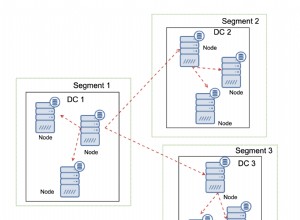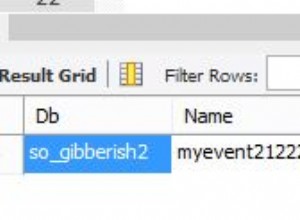Es gibt viele Möglichkeiten, dies zu lösen; am einfachsten wäre es wahrscheinlich, ein paar exists zu verwenden -Klauseln oder verbinden Sie die attributes Tabelle zweimal, aber Sie könnten auch group by verwenden und having Klauseln, um dasselbe Ergebnis zu erzielen:
-- option 1: using multiple exists clauses
select p.id, p.productname
from Products p
where exists (select 1 from Attributes a where p.ID = a.ProductID and a.AttributeID = 3)
and exists (select 1 from Attributes a where p.ID = a.ProductID and a.AttributeID = 4);
-- option 2: using multiple joins
select p.id, p.productname
from Products p
join Attributes a3 on p.ID = a3.ProductID
join Attributes a4 on p.ID = a4.ProductID
where a3.AttributeID = 3
and a4.AttributeID = 4;
-- option 3: using aggregate and having
select p.id, p.productname
from Products p
join Attributes a on p.ID = a.ProductID
group by p.id, p.productname
having sum(case when a.AttributeID = 3 then 1 else 0 end) > 0
and sum(case when a.AttributeID = 4 then 1 else 0 end) > 0;
-- option 4: using having and count
select p.id, p.productname
from Products p
join Attributes a on p.ID = a.ProductID
where a.AttributeID in (3,4)
group by p.id, p.productname
having count(distinct a.attributeid) = 2;
Welcher Weg für Sie am besten ist, hängt wahrscheinlich davon ab, welches Ergebnis Sie benötigen, welche Indizes und so weiter.




